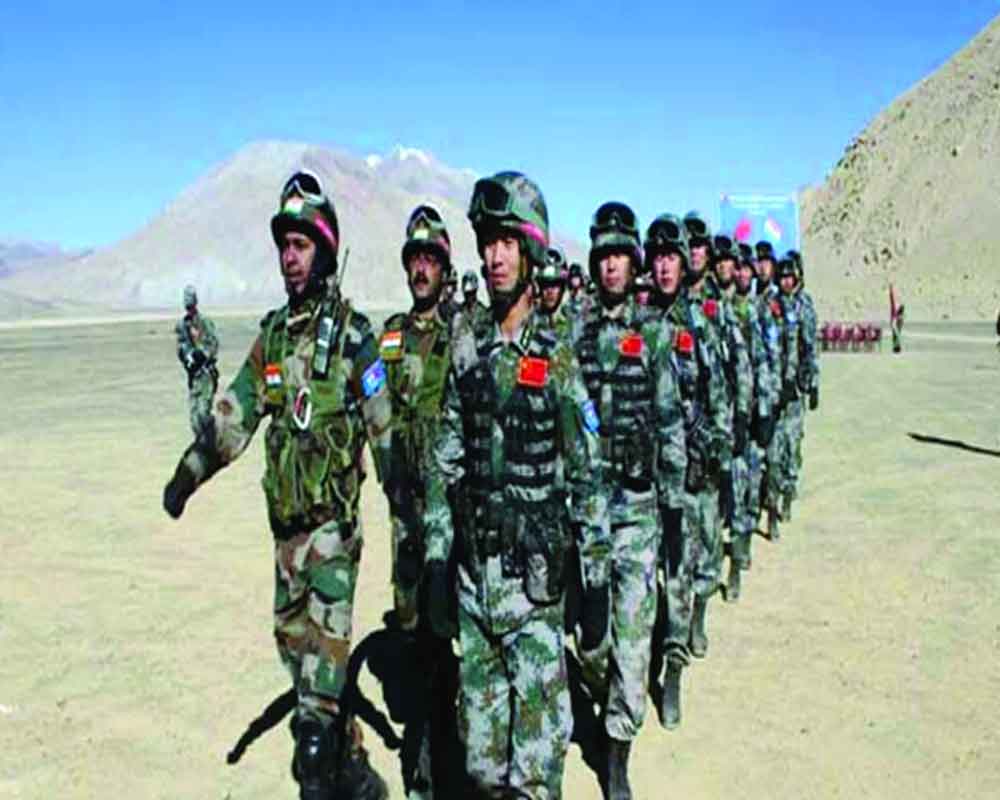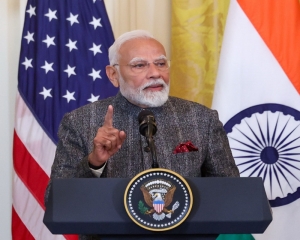The Government's secrecy and censorship cast shadows on the true story of LAC, leaving critical gaps in the nation's defence narrative
Unlike soldiers, diplomats and government officials are like the three wise monkeys. One such person not in that league I met more than a year ago told me about Chinese intrusions across LAC in 2020 and Operation Snow Leopard, the Indian Army’s only riposte to the intrusions. Former COAS, Gen Naravane’s book Four Stars of Destiny and periodic statements by the hawkeyed Chushul Councillor Konchok Stanzin throw new light on the ground situation. The government has put the lid on Manipur and LAC. No debate has been allowed in Parliament on LAC nor has any discussion been permitted in Parliamentary Standing Committees on Defence. Home, Defence and Foreign Ministers have made cryptic statements that are neither here nor there. Questions on LAC are conflated with questioning the integrity of ‘our brave jawans’. This was illustrated most effectively during Uri's surgical strikes and Operation Balakot, the 2019 election clinchers. Indian High Commissioner to Pakistan, Ajay Bisaria, questioned by Karan Thapar on the Wire in his recent book Anger Management: The Troubled Diplomatic Relationship between India and Pakistan about the effectiveness of Balakot strike, said: “We have got a narrative…but no proof”.
The government was clearly surprised by Chinese actions. As the first movers, the Chinese had the advantage. He explained that due to the ‘overlapping perception of LAC host of issues which the Chinese refuse to resolve have arisen. The overlap in perception led to the Chinese grabbing their 1959 Claim line. He insisted that what China had done was ‘transgression’ not intrusion’ and did not involve the loss of Indian territory. The two remaining friction points Depsang and Demchok will not be settled now. I suggested this might have been due to Indian actions at Doklam and Home Minister Amit Shah’s parliamentary statement about reclaiming Aksai Chin.
He referred to problems of patrolling due to buffer zones but said that this could be resolved by regulating patrols on both sides. Out-of-the-box procedures could be initiated to resume patrolling on fixed days and nominate no patrolling zones where clashes would not take place. On DMZs while he mentioned the specifications of ‘relocations of the two sides in the Fingers area’, Kailash Heights being declared a buffer zone was not mentioned. Only on 29 December Congress leader Jairam Ramesh cited Stanzin reporting that the memorial built after the 1962 war on Kailash Heights to commemorate the Rezang La battle was demolished as it fell into the DMZ where all manmade landforms had to be removed as per the withdrawal agreement. India had insisted PLA erase all writings in Mandarin and English indicating the Fingers area as belonging to China. India not only vacated Kailash Heights but also let the Chinese turn it into DMZ, a strategic folly compounded into a blunder for perpetuity as India could no longer reoccupy its own territory.
The most interesting aspect of our conversation was this: it was the Army, my friend said, that chose to vacate Kailash Heights as the government would have preferred it to be held as it gave a clear advantage to our forces as events later proved. Excerpts from Naravane’s book contain a blow-by-blow account of Op Snow Leopard but reasons for vacating Kailash Heights are not. The excerpts so far released by the publishers – who have been told not to publish any further excerpts till the book is cleared for publication will leave a crucial blank in the narrative. The excerpts from Operation Snow Leopard show the lack of decisiveness in government leadership about dealing with a critical situation that followed from the massing of tanks especially when India must not be the first to open fire. Naravane writes he got these orders from the very top. All this might seem like history but like the present government keeps flaying Nehru for losing Aksai Chin, a future non-BJP government will castigate it for letting China realise its 1959 Claim Line in Ladakh and the government for surrendering the gains of Op Snow Leopard.
The government official in 2022 ruled out any military or diplomatic breakthrough on LAC. He said India has achieved what China is willing to concede. He also said there will be no high-level meetings though we know that Modi did try for one at the G20 summit in Bali, Indonesia. He also said nothing will happen till after the 2024 elections as the government will keep a lid on LAC till it has won a third term. 90 per cent of his predictions have turned out true and for the rest we have to wait. It is a pity we may not know about the blanks in the LAC story as Naravane’s book is likely to be heavily censored if it is released at all.
Ajay Bisaria’s book has had no such problems though it contains critical details about operational matters as it shows that both the Balakot air strikes (whose effectiveness he does not confirm) and the readiness of nine missiles that were ready to be launched to force Wing Commander Abhinandan’s release were evidence of governments muscularity. PM Modi himself bragged in an election rally about targeting Pakistan with nine missiles, adding these were not meant for Diwali. For an election speech, it breached many red lines. All is forgiven and forgotten about publishing classified information when it demonstrates the government’s strength and power. Naravane’s book apparently does not.
(The writer, a retired Major General, was Commander, IPKF South, Sri Lanka, and founder member of the Defence Planning Staff, currently the Integrated Defence Staff. Views are personal)



























